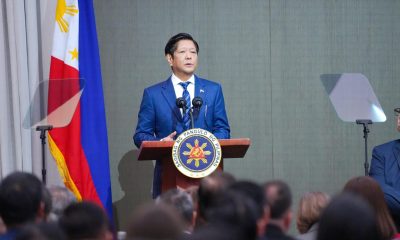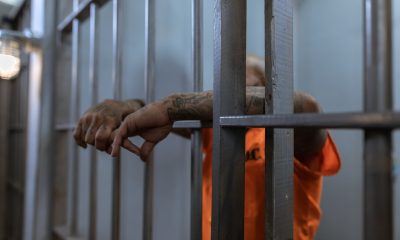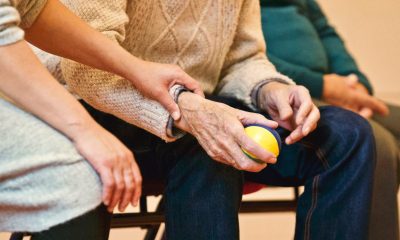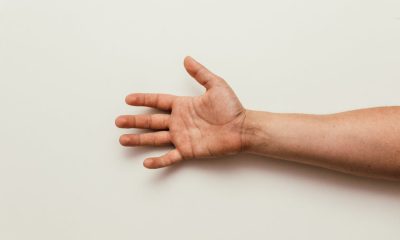Breaking
Syrian army moves to tame rebellious Damascus districts

Syrian army moves to tame rebellious Damascus districts. (Photo: upyernoz/Flickr)
BEIRUT—Backed by Russian air power and allied militiamen on the ground, Syrian troops have recaptured entire cities from rebels and Islamic State group extremists in the past year, including the key cities of Aleppo, Homs and Palmyra.
Yet for the past three years, President Bashar Assad’s forces have been unable to free opposition-held neighbourhoods of the capital Damascus, where rebel fighters have built a labyrinth of secret underground tunnels, beyond the reach of airstrikes and connected to opposition-held suburbs farther out.
A weeks-long push to expand the security belt around Assad’s seat of power, however, shows a new determination to retake the three areas north and northeast of the capital partially held by rebels — a long-festering thorn in the government’s side.
The offensive is the strongest in years, with warplanes reportedly conducting more than 70 airstrikes in one day and using surface-to-surface missiles in some of the deadliest attacks in weeks.
“The regime is pushing with all the powers it has,” said Ahmad Mahmoud, an opposition activist based in a rebel-held eastern suburb of Damascus.
The Damascus neighbourhoods of Barzeh, Qaboun, and Jobar form a semi arc from the northern to eastern edge of Damascus. They are partially held by rebels and are often used to fire mortar shells into the metropolis and stage hit-and-run attacks, a constant threat and reminder that rebels can disrupt life in the city that has escaped much of the destruction and violence of other areas.
Qaboun and Barzeh had witnessed relative calm since 2014 thanks to a reconciliation deal between rebels and the government. During that period, vegetables and daily products were allowed out of the neighbourhoods into Damascus and in return the government allowed food and other products into the neighbourhoods.
That allowed government troops to turn their attention elsewhere and in December government forces and their allies captured rebel-held eastern neighbourhoods of the northern city of Aleppo, marking Assad’s biggest victory of the six-year war. Aleppo is Syria’s largest city and once commercial centre.
In March, rebels began evacuating al-Waer, the last rebel-held neighbourhood in the Homs, the country’s third-largest city, and more recently they evicted rebels from the Wadi Barada region northwest of Damascus. In August last year, rebels evacuated the rebel-held Damascus suburb of Daraya after years of siege.
The victories have freed thousands of troops and pro-government fighters who are now marching in northern, central and southern Syria against rebels and members of the Islamic State group.
Opposition activists say that some of these troops will be used in the battle to capture the Damascus neighbourhoods and eastern Ghouta in what would boost the security belt around Damascus and ease pressure on the capital.
“They are dealing with the eastern Ghouta enclave last, because it is much larger than all the other enclaves,” said Aron Lund, a fellow at The Century Foundation. “It is bigger, more populated, and better defended than Eastern Aleppo was.”
Lund, a Syria analyst, said Qaboun and Barzeh have supplied the eastern Ghouta rebels with arms, fuel, and other goods through smuggling tunnels, “so taking these areas would probably be the first step toward retaking the Eastern Ghouta.”
It will not be an easy battle.
“They have their own world underground,” said Rami Abdurrahman of the Britain-based Syrian Observatory for Human Rights, which relies on a network of activists around the country. He was referring to the elaborate underground tunnels that the fighters use to move from one place to another, smuggle food, or launch attacks against government forces before disappearing underground again.
Anas al-Dimashqi, an opposition activist based in eastern Ghouta, said that many of the tunnels have been destroyed by the government recently, collapsing under the pressure of airstrikes, or come under control of troops in previous incursions that would eventually turn the balance of power in favour of the government.
Having surrounded the areas from all sides, coupled with the unravelling of a truce that lasted years, it will be easier for the government to eventually get these areas under its control.
Earlier this year clashes broke out in Damascus and on March 1, rebels killed Brig. Gen. Bilal Ibrahim Mubarak who was commanding the operations in Jobar and Qaboun.
In mid-March, government forces launched a wide offensive, pushing deep into the so-called al-Darb al-Tawileh road cutting Barzeh and Qaboun from eastern Ghouta. The retaliation came days later as insurgents, including fighters linked with al-Qaida, launched suicide attacks and captured some areas from the government — in their deepest incursion into Damascus since 2012 — only to lose them days later.
On April 3, government forces launched an offensive in Damascus capturing the Hafez road, a strategic artery, and sieged Barzeh in what would eventually facilitate its capture.
Opposition activists say government forces have now gained experience of how to slowly take control of areas after besieging them by starving the population and targeting hospitals and clinics in order to force them to accept a deal that would lead to an evacuation — a process that has occurred across other parts of the country.
Marwan al-Omawi, a media activist in eastern Ghouta, said that if the neighbourhoods and eastern Ghouta face an all-out attack, rebels are only few kilometres (miles) from the capital and can retaliate by shelling it to pressure the government.
He said powerful groups are present in the neighbourhoods and eastern Ghouta, including the Army of Islam, Failaq al-Rahman, the al-Qaida-linked Levant Liberation Committee, the ultraconservative Ahrar al-Sham and the Fajr al-Umma group, illustrating that the battle will not be easy for the government.
Osama Abu Zeid, a Syria-based activist said these areas will resist a government attack but eventually “these pockets have no supply lines and no lines to evacuate the wounded.”
Mahmoud, the Ghouta-based activist, says the government will have to carpet bomb the area to force opposition rebels to surrender.
“We know that the regime can fire 10,000 shells on an area. The regime might be able to advance but only after destroying whole districts with airstrikes and surface-to-surface missiles,” he said.





















